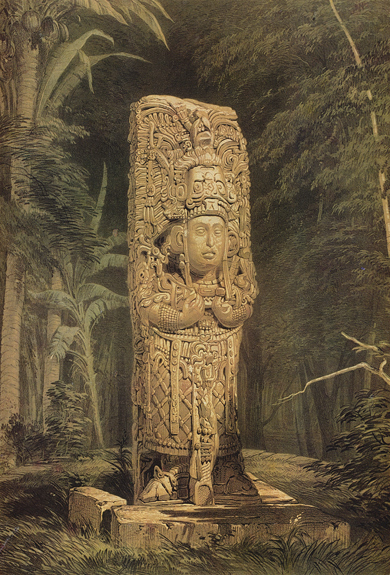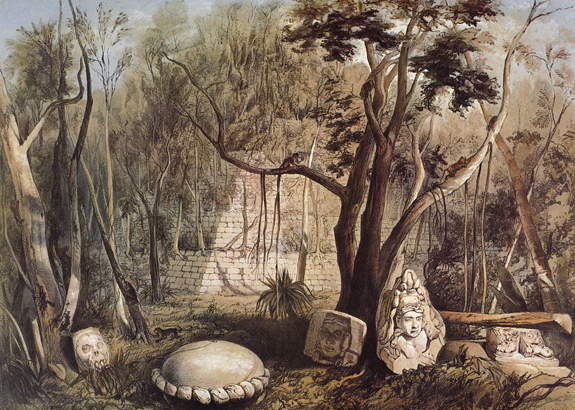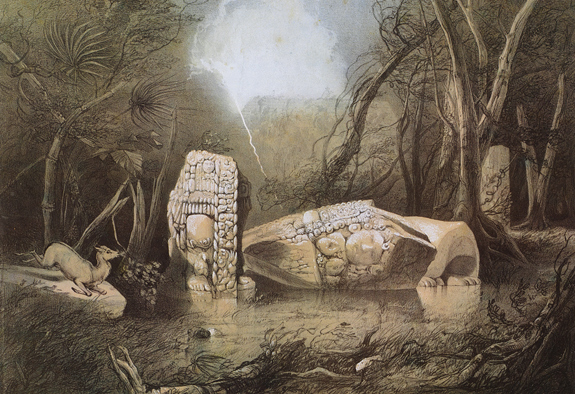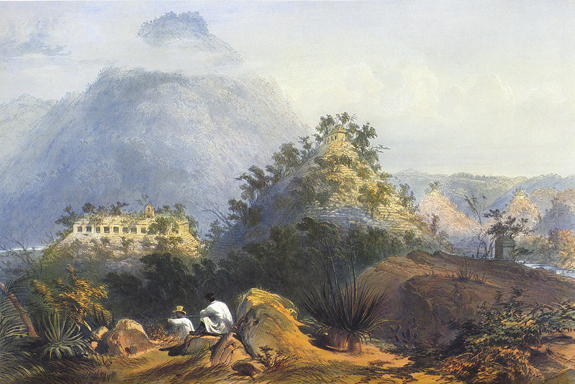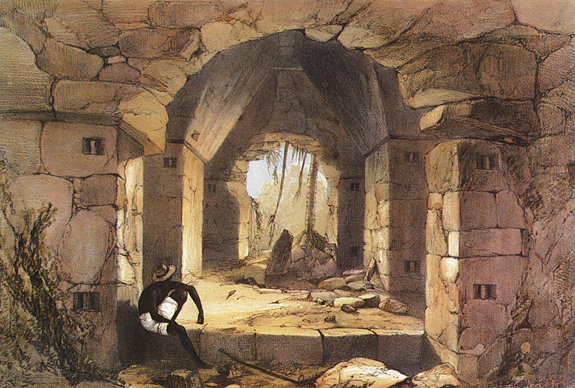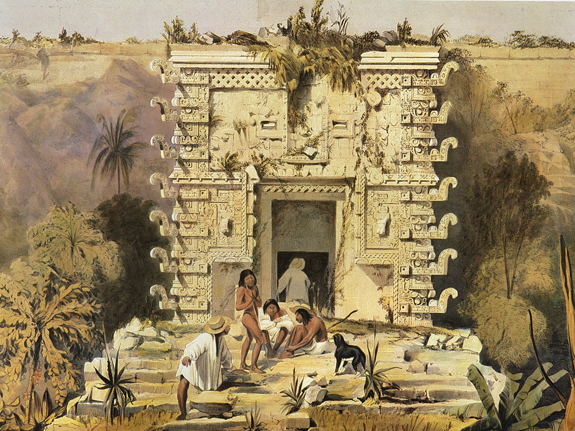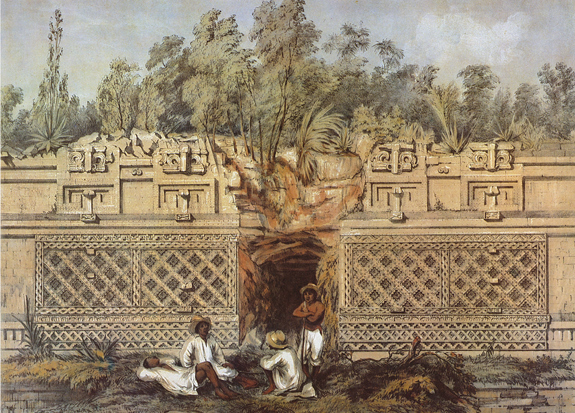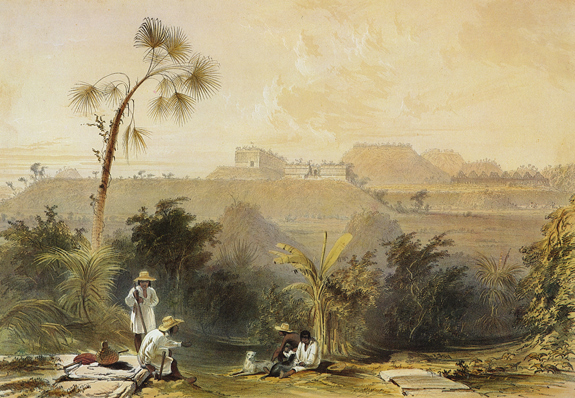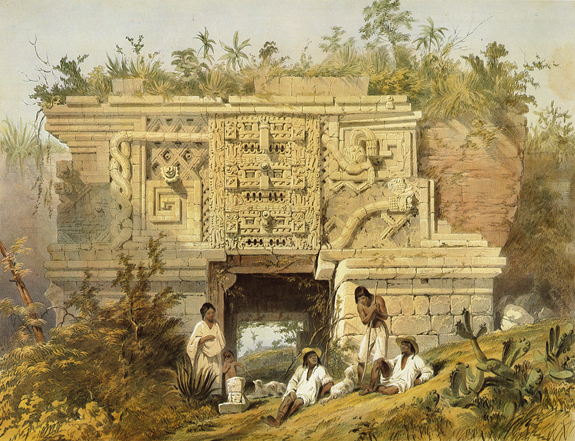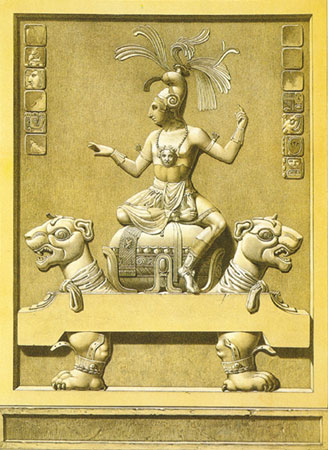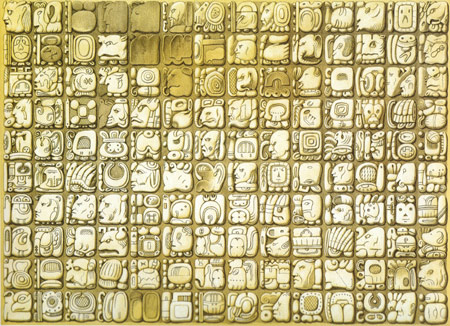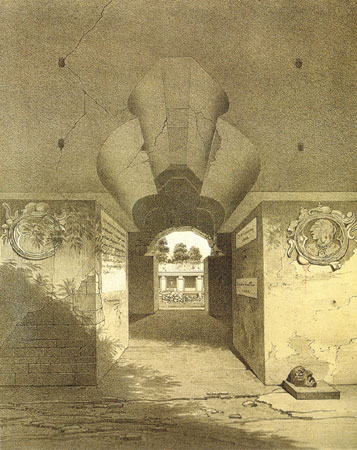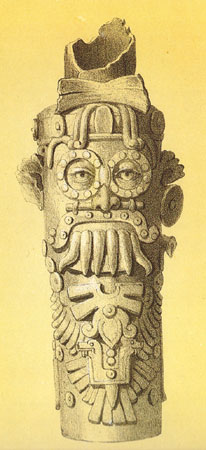__Respondiendo a la petición de Mauricio Díaz de Guatemala, reanudamos la serie de dibujos de Catherwood y textos de la exhibición online titulada Drawing from the Past: Maya Antiquity Throught the Eyes of Frederick Catherwood. En esta ocasión, con la lámina número 20.
_
Plate 20: Well at Bolonchen
__"The town of Bolonchen (“The Village of Nine Wells”) is located on the Yucatán peninsula and is known today for its magnificent caves. It is in a desert region of Mexico, where there are no rivers and the only source of fresh water flows deep beneath limestone shelves. Catherwood’s drawing emphasizes the physical labor involved in obtaining water in this part of the world, while at the same time creating a romantic perspective on the mysteries of the Maya people. Light floods in from the mouth of the cave, yet the only illumination at the bottom of the cavern is the incandescent glow of a single torch. The rest of the cave is lost to darkness. One can hardly imagine the labor involved in building this ladder which provides the only access to the well below.
__Stephens and Catherwood, as well as other scholars of the time, wrote about the descendants of the ancient Maya as primitive and lacking the glory of their ancestors. However, this 80-foot-tall wooden ladder shows more than a glimmer of the past. Like their ancestors, the Maya of the 19th century were quite capable of using raw materials in a skillful and functional manner.
__Stephens and Catherwood, as well as other scholars of the time, wrote about the descendants of the ancient Maya as primitive and lacking the glory of their ancestors. However, this 80-foot-tall wooden ladder shows more than a glimmer of the past. Like their ancestors, the Maya of the 19th century were quite capable of using raw materials in a skillful and functional manner.
*_*_*_*_*
Lámina 20: Pozo de Bolonchen
__"El pueblo de Bolonchen (“La ciudad de los Nueve Pozos”) se encuentra en la Península de Yucatán y se conoce hoy en día por sus magníficas cuevas. Este pueblo está ubicado en una región desértica de México, donde no existen ríos y la única fuente de agua fresca fluye desde lo profundo de las capas de piedra caliza. La representación de Catherwood se enfoca en el trabajo físico que costaba extraer el agua en esta parte del planeta, mientras que a la vez le da una perspectiva romántica al carácter misterioso del pueblo Maya. La luz fluye desde la boca de la cueva, aunque la única fuente de iluminación en el fondo de la caverna es el brillo incandescente de una sola antorcha. El resto de la cueva se pierde en la oscuridad. Es casi imposible tan solo imaginar el trabajo que costó construir la escalera que daba acceso al interior.
__Stephens y Catherwood, al igual que otros estudiosos de la época, se refirieron a los descendientes de los mayas del mundo antiguo, como seres primitivos, desposeídos de la gloria de sus ancestros. Sin embargo, esta escalera de más de 80 pies de altura demuestra todo lo contrario. Al igual que sus ancestros, los mayas del siglo XIX sabían utilizar la materia prima de manera hábil y funcional".
__Stephens y Catherwood, al igual que otros estudiosos de la época, se refirieron a los descendientes de los mayas del mundo antiguo, como seres primitivos, desposeídos de la gloria de sus ancestros. Sin embargo, esta escalera de más de 80 pies de altura demuestra todo lo contrario. Al igual que sus ancestros, los mayas del siglo XIX sabían utilizar la materia prima de manera hábil y funcional".
Kate O’Connor-Morris y Ayla Schlosser (de la exhibición online Drawing from the Past)




